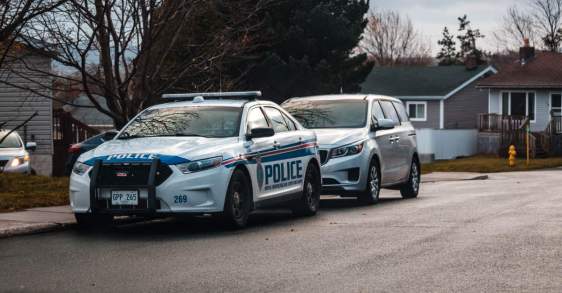
U.S. Supreme Court Overturns An Appeals Court Ruling In Case Involving Fleeing Misdemeanor Suspect
The U.S. Supreme Court on June 23, 2021, decided the case of Lange v. California that questioned whether law enforcement personal needs a warrant to enter into the home of a fleeing misdemeanor suspect. Click here to read the case.
The facts:
Arthur Lange was driving around in a station wagon playing loud music and honking his horn when an officer noticed him and activated his overhead flashing lights. Lange did not stop and continued onto his driveway and entered his garage. The state of California argued that the officer was allowed to enter into the garage of Lange without warrant because he had failed to stop when the officer’s lights were activated, which constitutes a misdemeanor offense.
The officer then followed Lange into the garage and conducted field sobriety tests. Lange was charged with the misdemeanor of driving under the influence of alcohol and a low-level noise infraction. A later blood test showed that his BAC was more than three times the legal limit.
Lange filed a motion to suppress evidence of his intoxication that was collected after an officer entered into his attached garage without a warrant. The California appeals courts applied the categorical rule that police are always entitled to enter a home without a warrant when in the hot pursuit of a fleeing misdemeanor suspect. However, the Supreme Court overturned the appeals court ruling and remanded the case.
Holding:
The majority opinion was written by Justice Elena Kagan, holding that under the Fourth Amendment, pursuit of a fleeing misdemeanor suspect does not always justify a warrantless entry into a home. Justice Kagan went on to say that “A great many misdemeanor pursuits involves exigencies allowing warrantless entry. But whether a given one does so turns on the particular facts of the case.”
Implications:
- Case-by-case basis.
This exclusionary rule of having to obtain a search warrant for a fleeing misdemeanor suspect is fact intensive and should apply on a case-by-case basis. Officers must now consider all the circumstances in order to determine whether there is a law enforcement emergency. Some instances of good reason to enter without warrant are those “hot pursuit cases,” such as to prevent imminent harm of violence, destruction of evidence or escape from the home may justify the warrantless entry into a home.
- Time to spare.
When an officer has time to get a warrant and it is not an emergency, they must obtain a warrant, even if the Defendant has fled.
- Fleeing felon rule intact.
This new precedent does not, however, disturb the long-standing rule of police being allowed to enter into the home of a fleeing felon without a warrant. This was pointed out in the concurrence by Judge Kavanaugh to shine light on the differences between a fleeing misdemeanor suspect and felony suspect.
- Encouragement of suspects to flee.
Justice Thomas in the concurrence stated that the exclusionary rule should not apply to evidence that is discovered by police while in pursuit of a fleeing misdemeanor suspect because it encourages suspects to flee. Further he stated that all precedents set thus far clearly disallow criminal defendants from using this exclusionary rule as a ‘shield against’ their bad conduct. Note: This however is not law, just food for thought.
Our experienced Dayton traffic and criminal defense lawyers at Holzfaster, Cecil, McKnight & Mues are here for you. We can assist you with better understanding of possible defenses to any criminal action! To learn more, please go to our website at www.hcmmlaw.com or call us at 937 293-2141. We can schedule an in-person conference or one by phone or Zoom. We look forward to helping you!
PUBLISHER’S NOTE:
I want to thank Madeline Howell for her assistance in drafting this article. Madeline has completed her first year of law school at the University of Dayton School of Law. She has been interning with Holzfaster, Cecil, McKnight & Mues for the summer. Thanks again Madeline!


















